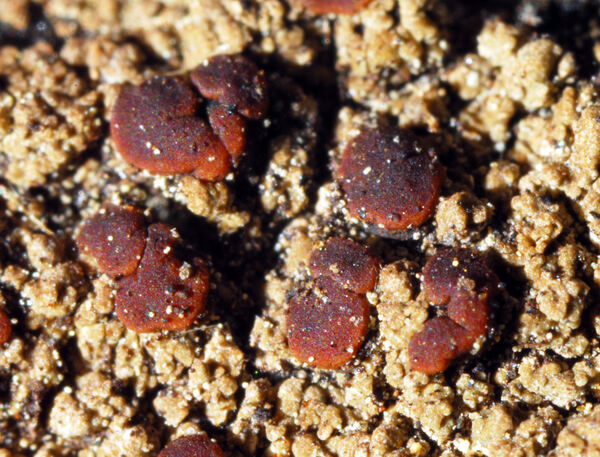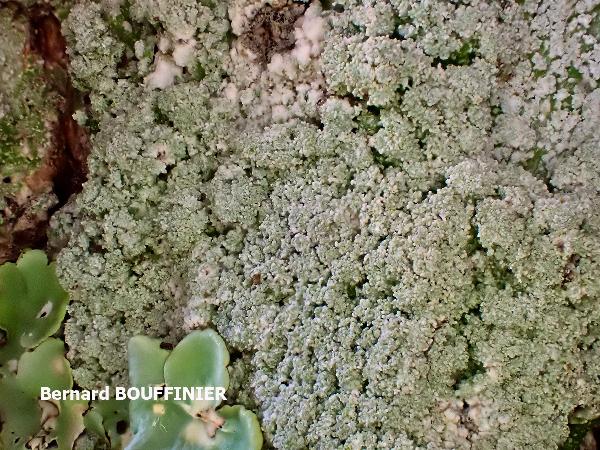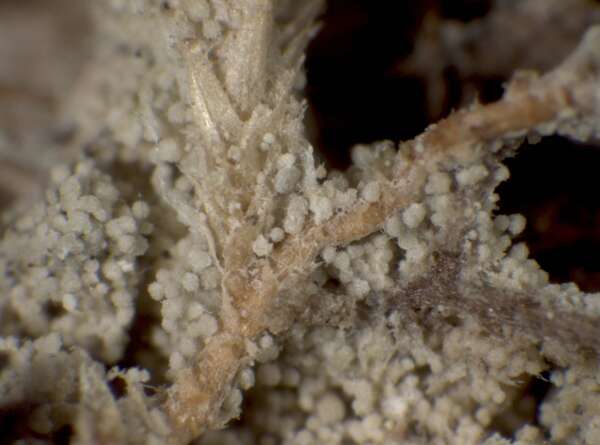Phyllopsora rosei Coppins & P. James
Lichenologist, 11: 166, 1979.
Synonyms:
Distribution: S - Cal (Puntillo 1996).
Description: Thallus crustose to minutely squamulose, esorediate, glaucous grey when dry, emerald green when wet, consisting of small granules in central parts, of minute squamules in peripheral parts, the whole forming an up to 5(-7) cm wide crust. Squamules at first granulose and 50-150 μm wide, then, especially in marginal parts, flattened, crenate to finger-like, 0.15-0.3 mm wide, weakly corticated, finely tomentose; prothallus whitish, cottony, sometimes obscured. Apothecia rather rare, biatorine, 0.3-1.5 mm across, often clustered, with a flat to convex or often tuberculate, pale orange- to deep red-brown, epruinose disc and a very thin and inconspicuous, concolorous or paler proper margin. Proper exciple colourless or red-brown, of radially oriented, thick-walled, gelatinized hyphae; epithecium poorly differentiated, colourless or brownish; hymenium colourless, 20–30 μm high; paraphyses mostly simple, 2–3 μm thick at mid-level, the apical cell not swollen; hypothecium thick, 200–230 μm high, colourless or red-brown in parts. Asci 8-spored, clavate, surrounded by a gelatinous I+ blue coat, with a well-developed I+ blue tholus with a I+ darker blue tube and a well-developed ocular chamber, Bacidia-type. Ascospores simple or thinly 1(-3)-septate, hyaline, narrowly ellipsoid to short-fusiform, (7-)10-13(-15) x 2-3(-4) μm. Photobiont chlorococcoid. Spot tests: thallus K- or K+ faintly yellow, C-, KC-, P+ orange-red. Chemistry: thallus with argopsin. Note: a rare western European epiphytic species with humid subtropical affinities; the single Italian collection is from the acid bark of Pinus leucodermis. It is included as “Critically Endangered” in the Italian red list of epiphytic lichens (Nascimbene & al. 2013c).
Growth form: Squamulose
Substrata: bark
Photobiont: green algae other than Trentepohlia
Reproductive strategy: mainly sexual
Most common in areas with a humid-warm climate (e.g. most of Tyrrenian Italy)
Commonnes-rarity: (info)
Alpine belt: absent
Subalpine belt: absent
Oromediterranean belt: absent
Montane belt: extremely rare
Submediterranean belt: absent
Padanian area: absent
Humid submediterranean belt: extremely rare
Humid mediterranean belt: absent
Dry mediterranean belt: absent

Predictive model
Herbarium samples
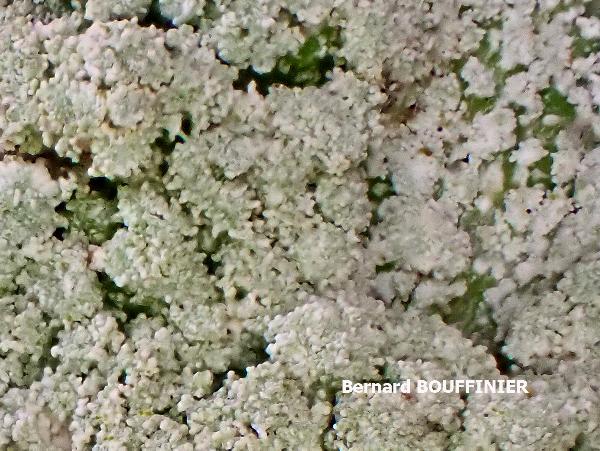
Bernard Bouffinier - Source: http://www.lichensmaritimes.org/index.php?task=fiche&lichen=1027&lang=en
France, Plogonnec
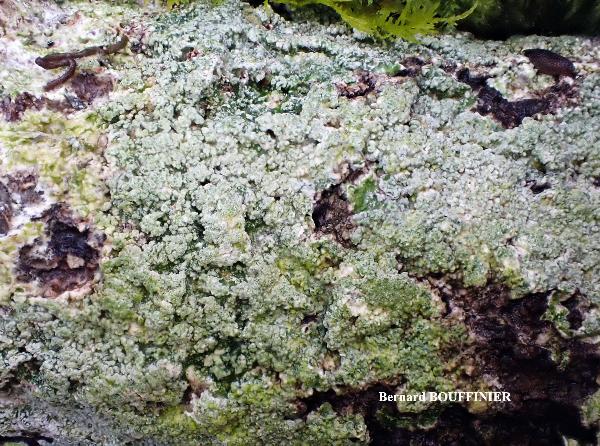
Bernard Bouffinier - Source: http://www.lichensmaritimes.org/index.php?task=fiche&lichen=1027&lang=en
France, Forêt du Cranou
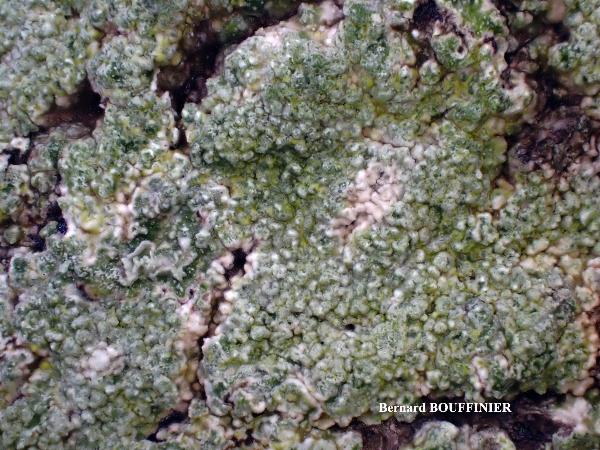
Bernard Bouffinier - Source: http://www.lichensmaritimes.org/index.php?task=fiche&lichen=1027&lang=en
France, Forêt du Cranou
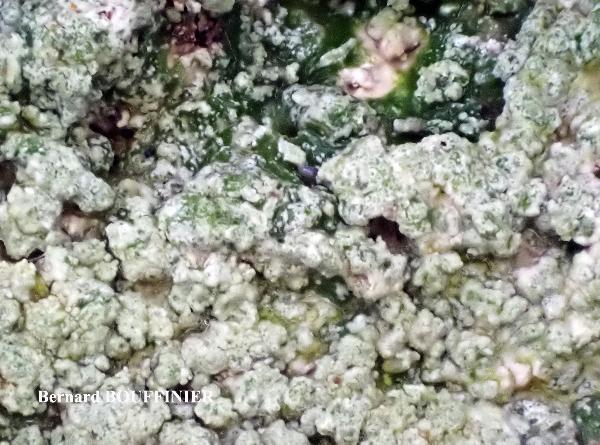
Bernard Bouffinier - Source: http://www.lichensmaritimes.org/index.php?task=fiche&lichen=1027&lang=en
France, Forêt du Cranou
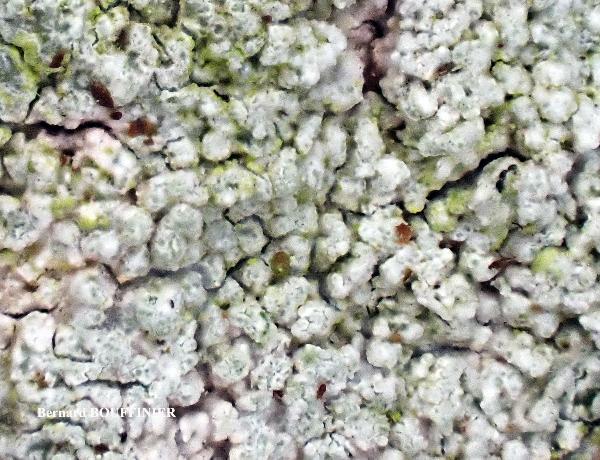
Bernard Bouffinier - Source: http://www.lichensmaritimes.org/index.php?task=fiche&lichen=1027&lang=en
France, Forêt du Cranou

Bernard Bouffinier - Source: http://www.lichensmaritimes.org/index.php?task=fiche&lichen=1027&lang=en
France, Forêt du Cranou
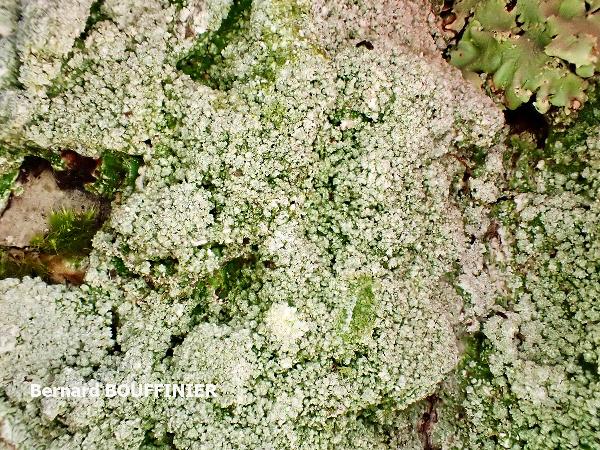
Bernard Bouffinier - Source: http://www.lichensmaritimes.org/index.php?task=fiche&lichen=1027&lang=en
France, Plogonnec
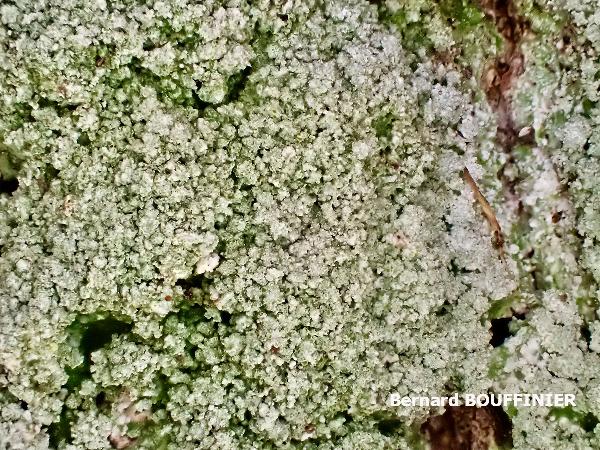
Bernard Bouffinier - Source: http://www.lichensmaritimes.org/index.php?task=fiche&lichen=1027&lang=en
France, Plogonnec
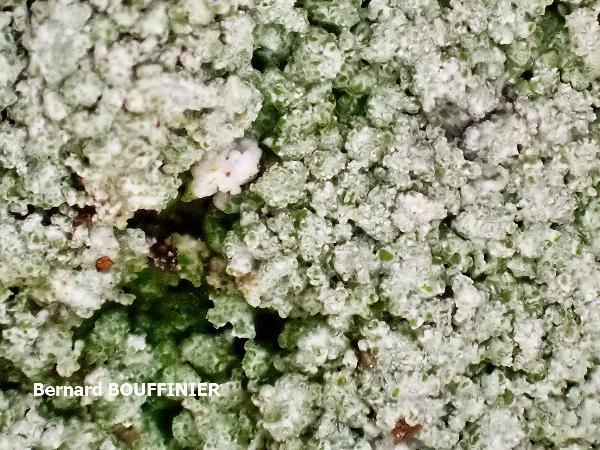
Bernard Bouffinier - Source: http://www.lichensmaritimes.org/index.php?task=fiche&lichen=1027&lang=en
France, Plogonnec
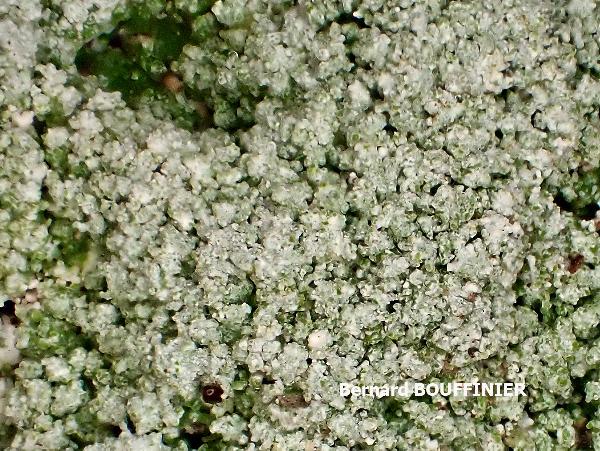
Bernard Bouffinier - Source: http://www.lichensmaritimes.org/index.php?task=fiche&lichen=1027&lang=en
France, Plogonnec
Growth form: Squamulose
Substrata: bark
Photobiont: green algae other than Trentepohlia
Reproductive strategy: mainly sexual
Most common in areas with a humid-warm climate (e.g. most of Tyrrenian Italy)
Commonnes-rarity: (info)
Alpine belt: absent
Subalpine belt: absent
Oromediterranean belt: absent
Montane belt: extremely rare
Submediterranean belt: absent
Padanian area: absent
Humid submediterranean belt: extremely rare
Humid mediterranean belt: absent
Dry mediterranean belt: absent

Predictive model
| Herbarium samples |

Bernard Bouffinier - Source: http://www.lichensmaritimes.org/index.php?task=fiche&lichen=1027&lang=en
France, Plogonnec

Bernard Bouffinier - Source: http://www.lichensmaritimes.org/index.php?task=fiche&lichen=1027&lang=en
France, Forêt du Cranou

Bernard Bouffinier - Source: http://www.lichensmaritimes.org/index.php?task=fiche&lichen=1027&lang=en
France, Forêt du Cranou

Bernard Bouffinier - Source: http://www.lichensmaritimes.org/index.php?task=fiche&lichen=1027&lang=en
France, Forêt du Cranou

Bernard Bouffinier - Source: http://www.lichensmaritimes.org/index.php?task=fiche&lichen=1027&lang=en
France, Forêt du Cranou

Bernard Bouffinier - Source: http://www.lichensmaritimes.org/index.php?task=fiche&lichen=1027&lang=en
France, Forêt du Cranou

Bernard Bouffinier - Source: http://www.lichensmaritimes.org/index.php?task=fiche&lichen=1027&lang=en
France, Plogonnec

Bernard Bouffinier - Source: http://www.lichensmaritimes.org/index.php?task=fiche&lichen=1027&lang=en
France, Plogonnec

Bernard Bouffinier - Source: http://www.lichensmaritimes.org/index.php?task=fiche&lichen=1027&lang=en
France, Plogonnec

 INDEX FUNGORUM
INDEX FUNGORUM
 GBIF
GBIF
